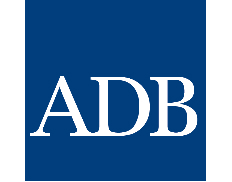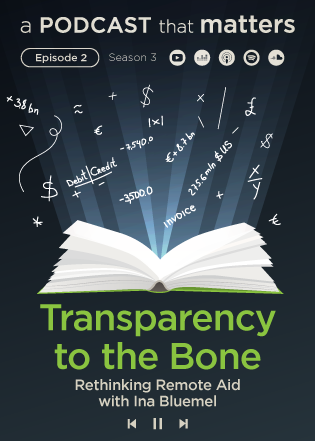Print

Second Issykkul Sustainable Development Project: Project Preparatory
Details
Locations:Kyrgyzstan
Start Date:Mar 9, 2017
End Date:Unknown
Contract value: USD 599,888
Sectors: Civil Engineering, Pollution & Waste Management (incl. treatment), Water & Sanitation
Description
TA No.: 9169-KGZ
Executing Agency: Ministry of Finance
Contract Description: Project Preparatory
Objective and Purpose of the Assignment:
The project will improve public health and environmental conditions within the area of the Issyk-Kul Lake by expanding and improving wastewater systems in selected urban centers around its shoreline. Being 180-km long, 60-km wide, and with surface area of 6,200 km2, the lenticular-shaped lake is the world’s second largest high-altitude lake. It is fed by a total of 118 rivers and streams, including hot springs and snow melt. The wider region is designated as a Ramsar (wetlands) site of globally significant biodiversity and forms part of UNESCO’s Issyk-Kul Biosphere Reserve that extends to over 43,000 km2. Rich with environmental, archeological, and cultural resources, it also provides a vital habitat for threatened and endangered species. The lake, shoreline, and surroundings are one of the nation’s most popular tourist destinations, with over 750,000 visitors in 2013, and over one million anticipated in 2020. Consequently, tourism has become an important economic driver for the region, and particularly for lakeshore areas. While the growth in tourism is destined to continue, its impact on the pristine and fragile environments and ecosystems of the lake and its vicinity are however of increasing concern, particularly from excessive sewerage pollution.
The Issyk-kul region suffers from sewerage pollution, mostly resulting from (i) dilapidated infrastructure and equipment; (ii) inadequate capital investment, operations and maintenance funding; and (iii) weak institutional capacity to provide sustainable services. Historically, the sewerage sector has substantial funding constraints primarily due to low tariff levels and tariff collection efficiencies, limited public funding, and a virtual absence of private sector participation. This has resulted in poor wastewater service throughout the region, causing pervasive environmental degradation, increased health risks from water-borne diseases and a lack of comprehensive financial policy to support environmental stability. Unmitigated, the overall effect of the deficient wastewater services will be to limit social and economic development, particularly
in urban areas.
Cholpon-Ata, a town on the lake’s northern shoreline typifies this situation, in that although it benefits from a flourishing tourism industry, its environmental pollution and public health risk potential is increasing due its dilapidated sewerage network and treatment facilities. Reflecting other lakeshore towns and settlements, it emphasizes the crucial need for environmental infrastructure improvements in order to protect and sustain the lake and surrounding areas.
The Government of the Kyrgyz Republic has recognized the significant environmental and natural resource value of the Issyk-Kul region, and is committed to ensuring its long-term environmental sustainability. As a result, it has adopted the National Sustainable Development Strategy for the Kyrgyz Republic for the period 2013–2017, which establishes tourism as a key pillar of economic development while specifically mentioning the Issyk-Kul region in the context of national development. The government has also already sought Asian Development Bank (ADB) assistance to improve environmental management and urban services in the region through the Issyk-Kul Sustainable Development Project (ISDP), which is being implemented in the lakeshore towns of Cholpon-Ata, Balykchy, and Karakol. This loan project is currently improving water supply, wastewater collection and conveyance, solid waste management, and community upgrading, as well as enhancing service delivery through improved enterprise resource management. The European Bank for Reconstruction and Development is also assisting to improve water supply systems in Balykchy and Cholpon-Ata, and other external assistance has also been provided to the region. In preparation for the 2nd ISDP, the ISDP project engaged a firm of international consultants to provide feasibility study and design consultancy services (FSDC) in December 2013 and three
individual international consultants in March 2016 to further formulate a specific component for improving the main sewage pump station and rising main to the Wastewater Treatment Plant (WWTP) in Cholpon-Ata. Detailed technical reports are available for the former and a technical / environmental and financial report are available for the latter.
A project preparatory technical assistance (PPTA) is required to complete the feasibility and related due diligence assessments, and develop the investment project. The Project covers the cities of Balykchy, Cholpon–Ata, and Karakol. In continuation of the immediate outputs in the first phase, it will involve:-
a) Confirmation of the technical proposals on: (i) WWTP site selection; (ii) adoption of technological solutions for treatment of sewage to acceptable effluent standards; (iii) effluent re utilization / discharge into the environment; (iv) rehabilitation, replacement and expansion of sewerage facilities in Cholpon-Ata and Karakol; (v) preparing, updating and augmentation of cost estimates.
b) Verification of compliance with ADB’s Safeguard Policy Statement (2009) on environmental, resettlement, and social issues and preparation of necessary documents.
c) Due diligence documentation on:-
(i) Technical. Utilizing previous technical information, technical due diligence will ensure the selection of appropriate, least-cost and highly reliable wastewater system technologies that are appropriate for local conditions and compatible with local operation and maintenance capacities.
(ii) Economic and financial. Financial and economic analyses and financial management assessments will be carried out to determine the financial viability and sustainability of the implementing institutions and project. Affordability and willingness to pay analyses will also be an important
factor of the financial due diligence, in order to establish an appropriate tariff and cost recovery system.
(iii) Governance. A governance risk assessment will be implemented regarding due diligence aspects of public financial management, procurement, anticorruption, policy, and legal issues.
(iv) Poverty and social. The project is classified as ‘effective gender mainstreaming’. An initial poverty and social assessment has been prepared. Due diligence will include the preparation of a gender equality and social inclusion action plan, and a consultation and participation plan.
(v) Safeguards. The project is provisionally categorized B for involuntary resettlement, A for environment, and C for indigenous peoples. Necessary safeguard documents will be prepared in accordance with the ADB’s Safeguard Policy Statement (2009).
(vi) Climate change and disasters. Due diligence will be carried out for disaster and climate change risk assessment, considering the vulnerability of the Issyk-Kul Lake and surrounding region to climate change and natural disasters.
d) Structuring the enhancement of water and wastewater institutional sustainability by developing plans for: i) increased cost recovery; ii) improved financial management; iii) enhanced utility staff training and capacity building; iv) strengthened water quality monitoring; v) increased environmental and hygiene awareness, and vi) an increase in the number of women developed as hygiene and sanitary advocates.


